Art Gallery(PART 2 OF 3)
Pyrrhic War
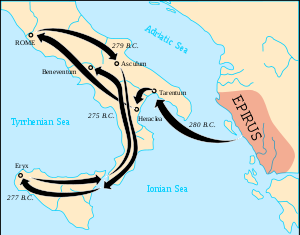
(pyrrhic90.png)
The Pyrrhic War (280–275 BC) was a complex series of battles and shifting political alliances among the Greeks (specifically Epirus, Macedonia, and the city states of Magna Graecia), Romans, the Italian peoples (primarily the Samnites and the Etruscans), and the Carthaginians.
The Pyrrhic War initially started as a minor conflict between Rome and the city of Tarentum over a naval treaty violation by one of the Roman consuls.
Tarentum had, however, lent aid to the Greek ruler Pyrrhus of Epirus in his conflict with Korkyra, and requested military aid from Epirus.
Pyrrhus honored his obligation to Tarentum and joined the complex series of conflicts involving Tarentum and the Romans, Samnites, Etruscans, and Thurii (as well as other cities of Magna Graecia).
Pyrrhus also involved himself in the internal political conflicts of Sicily, as well as the Sicilian struggle against Carthaginian dominance.

(pyrrhic06.jpg)
Pyrrhus' involvement in the regional conflicts of Sicily reduced the Carthaginian influence there drastically.
In Italy, his involvement seems to have been mostly ineffectual but had long term implications.
The Pyrrhic war proved both that the states of ancient Greece had essentially become incapable of defending the independent colonies of Magna Graecia and that the Roman legions were capable of competing with the armies of the Hellenistic kingdoms---the dominant Mediterranean powers of the time.
This opened the way for Roman dominance over the city states of Magna Graecia and advanced the Roman consolidation of power in Italy greatly.
Rome's proven record in international military conflicts would also aid its resolve in its rivalry with Carthage, which was eventually to culminate in the Punic Wars.
Linguistically, the Pyrrhic War is the source of the expression "Pyrrhic victory," a term for a victory won at too high a cost.
Its origin can be seen in Plutarch's description of Pyrrhus' reaction to the report of a victorious battle.
<iframe width="420" height="315" src="http://www.youtube.com/embed/QqcOC7QLcUQ" frameborder="0" allowfullscreen></iframe>
From "Pyrrhic War"
Wikipedia, the free encyclopedia

So, Kato, you looked into Wikipedia for me, didn't you?

Yes, I did. Besides, I was quite curious about this particular war, which turned out the source of the expression "Pyrrhic victory." It's really amazing! The war took place 2300 years ago, and the newspaper man still uses this phrase today. It is unthinkable in Japan.
I think, it's an intellectual tradition in the West to refer to the ancient Roman and Greek history.
Yes, come to think of it, it has something to do with the Renaissance.
How do you mean, Kato?
Well ... in Europe, people started to study the ancient Roman and Greek history when the Europeans cerebrated the Renaissance.
So, Kato, you don't know anything about ancient wars, do you?
Yes, of course, I know.
Oh ... do you? Like what?
To me, the battle of Thermopylae is more fascinating and exciting than the Pyrrhic War.
<iframe width="500" height="350" src="http://www.youtube.com/embed/m72A_Isi6x4" frameborder="0" allowfullscreen></iframe>
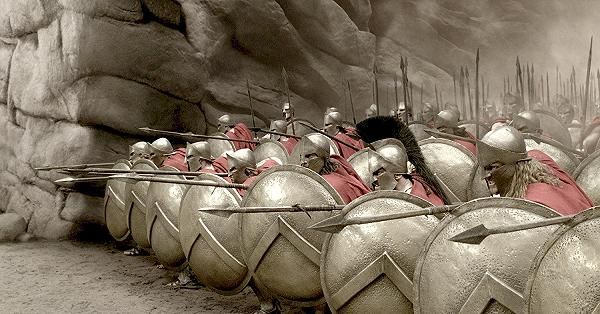
(300war2.jpg)
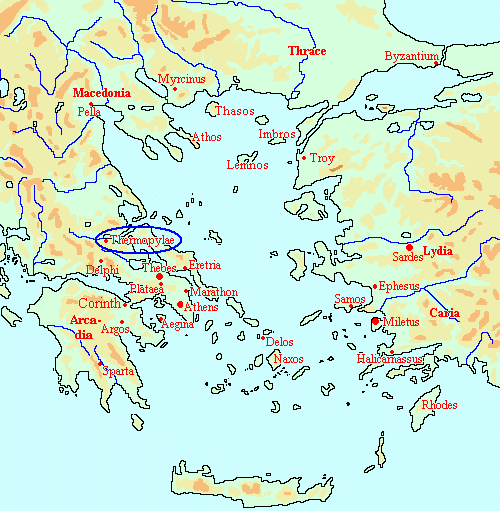
(300map2.gif)
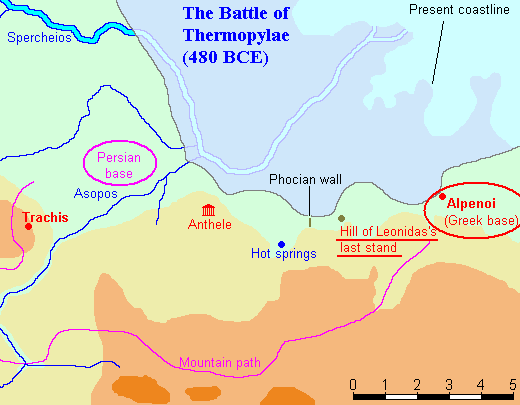
(thermopylae2.gif)

How come the battle of Thermopylae is more fascinating and exciting you than the Pyrrhic War, Kato?

...'Cause the following DVD gave me the hell of a bloody impression!

(lib30429.jpg)
■“Actual Shelf Page”

(lib30429d.jpg)
■“Actual Catalogue Page”

Kato, did you see the above movie on June 22, 2012?

Yes, I did. As I commented, the movie gave me a visual experience of the battle of Thermopylae.
Battle of Thermopylae

(300war4.jpg)
The Battle of Thermopylae was fought between an alliance of Greek city-states, led by King Leonidas of Sparta, and the Persian Empire of Xerxes I over the course of three days, during the second Persian invasion of Greece.
It took place simultaneously with the naval battle at Artemisium, in August or September 480 BC, at the narrow coastal pass of Thermopylae ('The Hot Gates').
The Persian invasion was a delayed response to the defeat of the first Persian invasion of Greece, which had been ended by the Athenian victory at the Battle of Marathon in 490 BC.
Xerxes had amassed a huge army and navy, and set out to conquer all of Greece.
The Athenian general Themistocles had proposed that the allied Greeks block the advance of the Persian army at the pass of Thermopylae, and simultaneously block the Persian navy at the Straits of Artemisium.
A Greek force of approximately 7,000 men marched north to block the pass in the summer of 480 BC.
The Persian army, alleged by the ancient sources to have numbered over one million but today considered to have been much smaller (various figures are given by scholars ranging between about 100,000 and 150,000), arrived at the pass in late August or early September.
The vastly outnumbered Greeks held off the Persians for seven days (including three of battle) before the rear-guard was annihilated in one of history's most famous last stands.
During two full days of battle the small force led by King Leonidas I of Sparta blocked the only road by which the massive Persian army could pass.
After the second day of battle a local resident named Ephialtes betrayed the Greeks by revealing a small path that led behind the Greek lines.
Leonidas, aware that his force was being outflanked, dismissed the bulk of the Greek army and remained to guard the rear with 300 Spartans, 700 Thespians, 400 Thebans and perhaps a few hundred others, most of whom were killed.
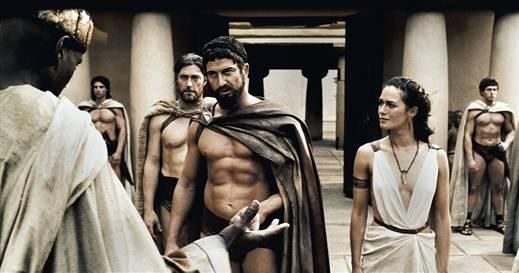
(300war3.jpg)
From "Battle of Thermopylae"
Wikipedia, the free encyclopedia
<iframe width="500" height="350" src="http://www.youtube.com/embed/wDiUG52ZyHQ" frameborder="0" allowfullscreen></iframe>

So, Kato, you love this fast-paced, action-packed movie---especially, combined action scenes of slow-motion and fast-forward movement, don't you?

Yes, I do. These fighting scenes are so impressive and shocking that this technique might have influenced in making the violent scenes of "Spartacus, blood and sand"---a dazzling and fascinating television program in 2010.
Well ... I don't like wars and battles, but I'm glad you're now familiar with the expression---"Pyrrhic victory."
Yes, yes, yes, ... I think I'm westernized as far as the intellectural tradition is concerned.

【Himiko's Monologue】

The Vancouver Art Gallery was founded in 1931 and had its first home at 1145 West Georgia Street.
In 1983 it moved to the current Hornby Street location, the former provincial courthouse.
(To be followed)